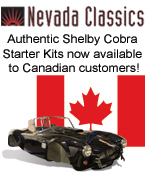Quote:
Originally Posted by Texasdoc

I've heard some say "Put 10W-30 in everything" and just drive it. That's what I have been using. With my HV pump I get 75 PSI cold idle, 40 PSI hot idle, up to 70 PSI cruise.
|
There are High Volume pumps and then there are High Volume High Pressure pumps. To make a high volume pump they simply put in wider gear teeth and it pumps more volume. Roughly 10% more, from what I have read. The
oil pump has a pressure relief valve that is spring loaded. Put in a stronger spring and wallah you have a high pressure pump. 75 PSI would be a high volume high pressure pump in my opinion.
So the PRV spring will not allow the
oil pressure (in your case) to go above 75 psi, no matter what
oil, what temp, what rpm, because the PRV lifts and allows some of the oil that the pump is pumping to dump back into the oil pan. So how much oil is flowing to the engine and how much is flowing back to the pan? Once the oil pressure reaches the limit and the PRV lifts to regulate the oil pressure, nobody knows the answer. Or can it be figured out intuitively?
We now know that your PRV is set to 75 psi, so we can assume any time your oil pressure is below 75 psi that the PRV is closed, and all the oil is pumping through the engine. Since it is a high volume pump, we can assume that your engine is getting 10% or so more volume that it would have gotten with a factory pump.
Now let's suppose that the factory pumps PRV limit is set to 60 psi. For arguments sake, let's say, when fully warmed up, your engine runs 40 psi at idle, 60 psi at 3000 rpm and 75 psi at 5000 rpm. At 3000 rpm your engine is getting the same amount of flow that a factory pump would have maxed out at. The factory pump would have required 3300-3600 rpm maybe more to maxed out (lift the PRV). As you spin faster you engine is getting more flow than a factory pump would have provided, until you max out at 75 psi.
If on the other hand you only had a high volume pump, and the PRV was set the same as the factory pump, you would only get a higher volume of oil flow when the PRV was closed. They would both lift at the same pressure (different rpm) and the same oil flow would go through the engine from that rpm on up.
Quote:
Originally Posted by Texasdoc

I recently came across an article on BITOG that made the remark that no oil at ambient temperatures (anything less that 120 degrees Fahrenheit) is thin enough to flow well - so use the lightest oil made 0W. They also agreed with the 10psi per 1000 rpm rule. So their summary was to use 0W-XX - the XX being whatever weight oil fulfilled the 10per1000 rule with a minimum PSI of 15 at idle when hot. So if I get 70 PSI at 3000 RPM cruise with 0W-40, I should decrease the viscosity to 0W-30 or 0W-20 to get the pressure down. Lower pressure = higher flow. It is the "flow" that provides protection, not the pressure.
|
Well this is a logical way to look at things to give a direction of which way to move, but it is assuming a whole bunch of things that may or may not be true for a specific engine. It is this half baked stuff that can miss-lead people and get them into trouble. The 10 psi per 1000 rpm rule of thumb is, just that. A simple thing that is easy to remember that says if your oil pressure is below this you likely have a problem. It was never meant to be a design guideline for selecting the right oil.
Think about it a second. You put in a higher volume pump with a high pressure setting. The higher flow rate from your pump gives higher pressure. Now by this 10 psi per 1000 rpm rule of thumb logic, they have decreed that you do not have enough flow, and therefore you need to go to a thinner oil. Conversely if you put in a low volume oil pump that caused lower pressure they would have you going to a thicker oil, because by there logic you have too much flow and you need to slow it down. The logic in these cases is 100% wrong!
This is why I stated in an earlier post. The oil pressure reading is only telling you the pressure at a single point. It doesn't tell you a damn thing about flow. The only thing for certain is that at 0 pressure you have 0 flow. On any given engine, an increase in flow will result in an increase in pressure, but an increase in the pressure reading does not necessarily mean an increase in flow. It may mean the oil temperature dropped or you put in a higher viscosity oil. I can restrict the flow, say a chunk plugs an oil passage, and causes the PRV to lift on high pressure. You now have very little oil flowing to the engine, but are reading max pressure. High pressure could mean zero flow if there was a blockage (or if someone plumbed the remote oil filter incorrectly).
Don't think oil passages never get plugged. More than one poor fellow found a whole bunch of teflon tape plugged up his oil passages, and boiling the block does not remove it.


